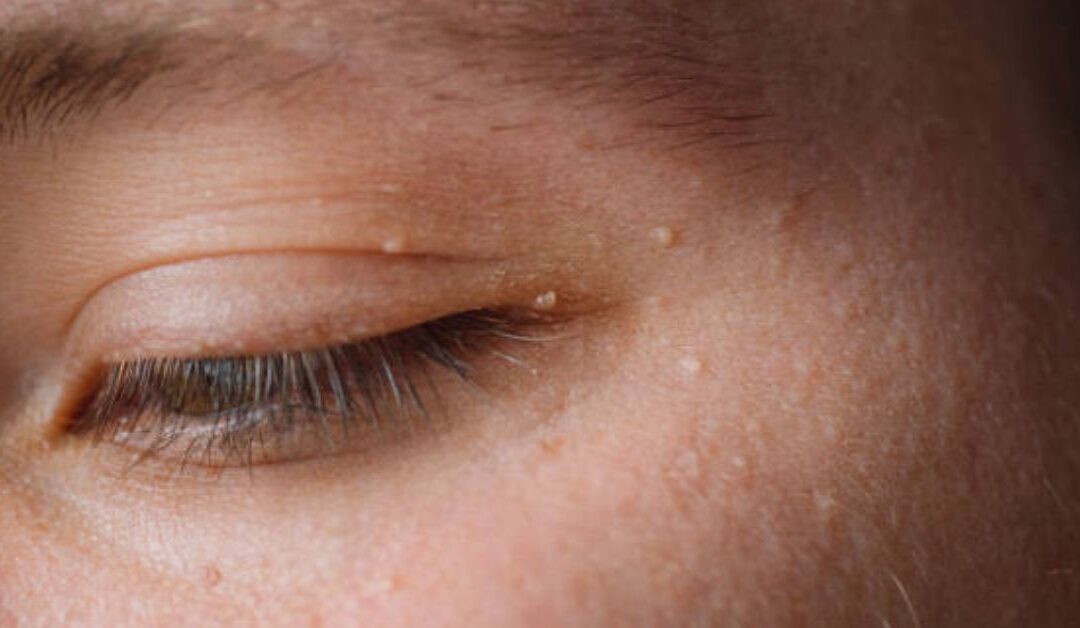Milia are small, white, keratin-filled cysts that typically appear on the skin’s surface. When they form under the eyes, they can be particularly noticeable due to the thin, delicate nature of the skin in that area. While milia are harmless and non-inflammatory, many people seek treatment because of aesthetic concerns, especially when they appear in clusters or persist over time.Milia under the eyes are common in both children and adults, and they’re often mistaken for whiteheads or acne. However, unlike acne, milia don’t form from clogged pores or inflammation. Instead, they are tiny cysts that do not usually go away on their own. For those living in the UAE, Milia Treatments in Dubai offer advanced, gentle, and effective options to address these stubborn bumps under the eyes safely and professionally.
Causes of Under-Eye Milia
Milia occur when dead skin cells become trapped under the skin, instead of being naturally exfoliated. Common causes of milia under the eyes include:
Use of heavy or rich eye creams that clog pores
Lack of exfoliation in the under-eye area
Skin damage from sun exposure
Genetics or naturally dry skin
Improper removal of eye makeup

Safe Treatment Options for Under-Eye Milia
Treating milia under the eyes should always be done with caution. Here are the most effective and safest treatment options:
Professional Manual Extraction
This is the most common and immediate method of removal. A dermatologist or trained aesthetician uses a sterile needle or blade to gently open the cyst and extract the trapped keratin.
Why it’s effective:Manual extraction provides instant results and is safe when done by a professional. It minimizes scarring and the risk of infection.
Important Note:Never attempt to pop or squeeze milia at home, especially under the eyes. The skin is too thin and sensitive, and improper attempts can lead to bruising, scarring, or infection.
Gentle Chemical Peels
Low-strength chemical peels using acids like mandelic acid or lactic acid can help exfoliate the skin and prevent future milia. These peels must be performed by a professional and should be tailored to the sensitive under-eye area.
Why it’s effective:It encourages skin renewal and helps prevent dead skin cell buildup, which is often a contributing factor.
Topical Retinoids (Under Medical Supervision)
Topical retinoids such as tretinoin or adapalene increase cell turnover and may help treat and prevent milia. However, these should be used with extreme caution under the eyes due to the potential for dryness or irritation.
Why it’s effective:They promote natural exfoliation and help clear clogged pores over time.
Tip:Always consult a dermatologist before using any retinoid around the eyes and use the lowest strength available.
Low-Level Laser Therapy (For Persistent Milia)
For stubborn or recurring milia, some dermatologists may suggest laser treatments, such as CO2 lasers or electrocautery, to remove milia with precision and minimal damage.
Why it’s effective:It allows for highly targeted removal, especially in delicate areas, without damaging surrounding skin.
Gentle Skincare Adjustments
Preventing under-eye milia often begins with the right skincare routine:
Avoid heavy, occlusive eye creams
Use eye creams with exfoliating ingredients like glycolic acid or retinol (formulated for the eye area)
Always remove eye makeup thoroughly
Use sunscreen daily, even around the eyes (opt for mineral-based formulas)
Tip:Look for products labeled “non-comedogenic” and ensure they are specifically safe for use around the eyes.

What Not to Do
When dealing with milia under the eyes, avoid the following:
DIY removal with needles or pins
Harsh scrubs or physical exfoliants
Applying acne products like benzoyl peroxide or salicylic acid directly under the eyes
Ignoring sun protection
When to See a Dermatologist
If milia persist for several weeks or if they increase in number, it’s best to consult a dermatologist. Under-eye skin is extremely delicate, and professional guidance ensures safe and effective results without risking damage or pigmentation—especially for individuals with medium to dark skin tones.
Final Thoughts
Milia Treatments Dubai under the eyes can be frustrating, but they are completely treatable with the right approach. Whether you opt for manual extraction, gentle chemical peels, or prescription retinoids, safety is key—especially in such a sensitive area. Always prioritize professional care and adopt a skincare routine that promotes cell turnover while keeping the under-eye area nourished and protected. With consistent care, a smoother, clearer under-eye area is within reach.
